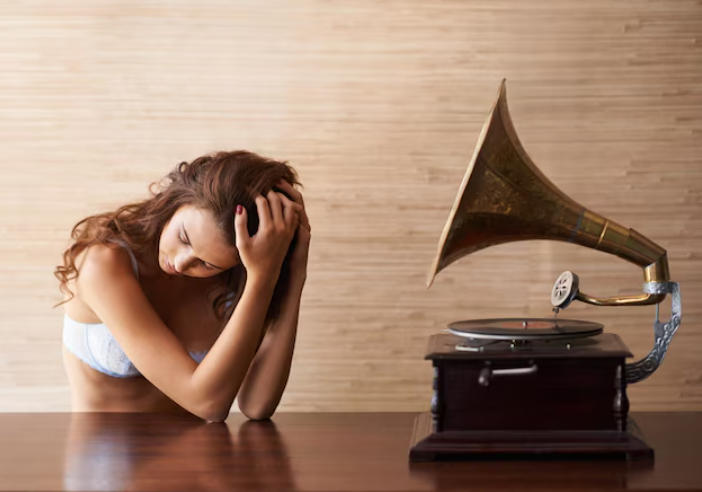There has been an odd change in musical compositions, one that isn’t characterized by loud crescendos or intricately layered orchestration. Rather, it talks quietly, allowing silence to be the main focus. Over the past ten years, people have progressively come to appreciate music that gives them time to think, breathe, and contemplate. This is a deliberate protest against audio overload rather than merely a stylistic decision. That’s when the loudest song is stillness.

In particular, Max Richter has had a significant impact on rethinking how silence is used in music. His eight-hour-long, highly regarded masterpiece Sleep reimagines what composing can be. It is intended to coexist with the listener’s unconscious rather than be heard in the conventional sense. This composition, which combines delicate piano progressions, ambient drones, and strings, embraces rather than interrupts. His method works incredibly well to drown out the cacophonous din of daily existence. Richter creates mood as well as music by utilizing silence as a fundamental component.
Elements Defining Music’s New Minimalist Era
| Aspect | Details |
|---|---|
| Musical Style | Neo-classical / Post-minimalism |
| Central Theme | Silence, space, repetition, emotion |
| Influential Pioneers | Steve Reich, Philip Glass |
| Contemporary Leaders | Max Richter, Nils Frahm, Ludovico Einaudi, Ólafur Arnalds, Anna Thorvaldsdottir |
| Functional Use | Film scores, mindfulness apps, sleep, focus playlists |
| Listener Impact | Emotional clarity, mental calm, immersive experience |
| Digital Influence | Playlists, algorithms, and ambient curation on platforms like Spotify |
| Notable Works | Sleep (Richter), The Blue Notebooks (Richter), Elements (Einaudi), Re (Arnalds) |
| Key Attributes | Acoustic-electronic fusion, emotional accessibility, sparse yet resonant soundscapes |
Another creator of this changing style, Nils Frahm, adopts a more tactile approach. He turns recording spaces into living instruments by combining upright pianos with echoing loops and synths. Interestingly, he incorporates mechanical sounds into his compositions, such as the creaking of pedals and the tapping of keys, giving them a more unvarnished, human quality. Because of this, his live performances are remarkably immersive, providing listeners with a dynamic and meditative experience. Frahm’s use of minimalism envelops the listener in a cocoon of purposeful quiet rather than isolating them.
Then there is Ludovico Einaudi, who is arguably the most streamed composer in this genre. His works frequently inspire a combination of hope and a subtle sorrow. His piano-led soundtracks, such as Una Mattina and Nuvole Bianche, are incredibly complicated emotionally yet having a very obvious framework. The music of Einaudi has become a standard in European documentaries, meditation sessions, and movies. His ability to communicate with millions of people without uttering a single word is a prime example of how silence, when skillfully crafted, can remarkably effectively convey universal feelings.
Technology is included into this poignant discussion by Ólafur Arnalds. Algorithm-driven pianos in his works frequently react in real time to his lead playing. Even the composer is surprised by the harmonies produced by this technique, which is especially novel in an area that is based on human interpretation. His music has been regularly used in streaming playlists, particularly those with study, concentration, or relaxation labels. Arnalds’ method provides a preview of a time when technology would help create emotional resonance instead of just imitating it.
Meanwhile, Anna Thorvaldsdottir’s symphonic minimalism is influenced by Icelandic landscapes. Geological metaphors like as underground rumbling, glacial pace, and tectonic tone alterations frequently influence her pieces. Her music requires presence and is not meant to be listened to in the background. She creates tension by leveraging the lack of movement to suspend time in her pieces. After just a few meager notes, her work leaves a lasting impression due to its remarkably enduring emotional weight.
In their silent revolution, these musicians are not alone. Their impact is evident in hip-hop, R&B, and pop. For example, Billie Eilish challenges conventional notions of loudness by combining muted beats and whispered vocals. Her song “When the Party’s Over” serves as an example of how powerful emotional effect may be achieved with minimal production. Similar to this, musicians like Kanye West have created reflective moments amidst otherwise daring compositions by using lone piano notes and reverberating silence in songs like Runaway.
Consumer behavior also reflects this change. These days, streaming services support this trend by endorsing playlists like “Sleep Sounds,” “Deep Focus,” and “Peaceful Piano.” Platforms like Spotify have greatly blurred the line between listener utility and artistic intent by selecting music to suit particular moods. In a society that hardly ever stops, these playlists provide cerebral scaffolding in addition to entertainment. Minimalist music has emerged as a wonderfully powerful aid for people struggling with stress or overstimulation to achieve emotional equilibrium.
Notably, this genre’s adaptability is directly related to its success. The use of minimalist music is extremely diverse, ranging from therapy sessions and luxury brand soundtracks to yoga studios and movie scores. Since brands now understand that ambient tranquility has commercial value, they align themselves with these aural experiences. Not out of nostalgia, but rather because it reflects a contemporary need to slow down, designers, software developers, and advertisers gravitate toward the aesthetic of stillness.
Academically, music schools and conservatories are adapting their curricula to take into account this continuous change. Students are now investigating restraint, whereas previously they were instructed to build towards climaxes. Texture, atmosphere, and patience are emphasized in the courses. Aspiring composers especially benefit from this shift in schooling since it inspires them to emphasize silence as a narrative device in addition to music.
